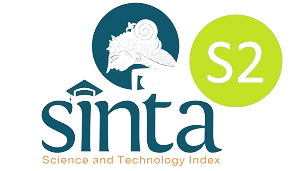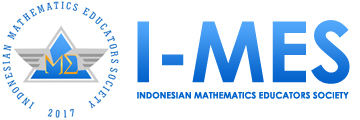Aktivitas Guru Matematika dalam Pembelajaran Menggunakan Perangkat Lunak Geometri Dinamis
DOI:
https://doi.org/10.29408/jel.v6i1.1734Keywords:
dynamic geometry software, GeoGebra, teachers activities, teachers behaviorAbstract
This study aims to describe the use of dynamic geometry software (DGS) by mathematics teachers in their teaching and learning activities. This study case involves two junior high school mathematics teachers who use DGS in their teaching activities. The data of this study were collected by recording teacher activity and interviewing the teachers. The data were then analyzed through data transcription, data categorization, data reduction, data review and analysis, and conclusion. The results of this study involved, first, the use of DGS in teaching and learning activities can be categorized into two activities: 1) shifting and 2) delivering content. The delivering content is later divided into two activities: a) applying representation and b) modeling. Shifting activity occurred when teachers had an interval period while conducting one activity to another. Delivering content-applying representation activity occurred when teachers were using DGS to deliver both conceptual and procedural materials to the students. Delivering content-modeling activity occurred when teachers were using DGS to make students acquire knowledge and have a problem-solving skill as performed by their teachers. The modeling activities occurred either explicitly and implicitly.References
Arlin, M. (1979). Teacher transitions can disrupt time flow in classrooms. American Educ.0.Ll.Ational Research Journal, 16(1), 42–56. https://doi.org/10.3102/00028312016001042.
Baki, M., & Arslan, S. (2016). Reflections from pre-service teachers mathematics teaching process. H. U. Journal of Education, 31(4), 736–749. https://doi.org/10.16986/HUJE.2015014664.
Bandura, A. (1969). Social learning theory of identificatory processes. In David A Goslin (Ed.), Handbook of Socialization Theory and Research. Rand McNally & Company.
Clark, C. M., & Peterson, P. L. (1984). Teachers’ thought processes, (72). Institute for Research on Teaching, College of Education, Michigan State University.
Doyle, W. (1983). Managing classroom activities in junior high English classes: An interim report. (Research and Development Center for Teacher Education, Ed.). University of Texas.
Gump, P. V. (1967). The classroom behavior setting : its nature and relation to student behavior office of education. Kansas: Lawrence, KS: University of Kansas, Department of Psychology.
Haston, W. (2007). Teacher modeling as an effective teaching strategy. Music Educators Journal, 93(4), 26–30. https://doi.org/10.1177/002743210709300414.
Hohenwarter, M., & Fuchs, K. (2004). Combination of dynamic geometry , algebra and calculus in the software system GeoGebra. Computer Algebra Systems and Dynamic Geometry Systems in Mathematics Teaching Conference 2004, (July), 1–6.
Jamieson-Proctor, Finger, G., Cavanagh, R., & Fitzgerald, R. (2013). Development of the TTF TPACK survey instrument introduction – The TTF Project and TPACK. Australian Educational Computing, 27(3), 26–35.
Listiawan, T. (2017). Representasi mental dan proses kognitif yang mendasari Technological Pedagogical and Content Knowledge (TPACK). In Seminar Nasional Pendidik dan Pengembang Pendidikan IKIP Mataram 2017 (pp. 588–596). https://doi.org/10.31227/osf.io/p7ny4.
Listiawan, T., & Baskoro, W. W. (2015). Analisis Technological Content Knowledge (TCK) calon guru matematika dalam menggunakan perangkat lunak geometri dinamis. In Seminar Nasional Matematika dan Pendidikan Matematika 2015 (pp. 827–834). https://doi.org/10.13140/RG.2.1.4443.3522.
Listiawan, T., Purwanto, P., As’Ari, A. R., & Muksar, M. (2018). Mathematics teachers Technological Content Knowledge (TCK) in using Dynamic Geometry Software. Journal of Physics: Conference Series, 1114, 012121. https://doi.org/10.1088/1742-6596/1114/1/012121.
Smith, H. A. (2009). The marking of transitions by more and less effective teachers. Theory Into Practice, 24(1), 57–62. https://doi.org/10.1080/00405848509543147.
Yinger, R. J. (1986). Examining thought in action: A theoretical and methodological critique of research on interactive teaching. Teaching and Teacher Education, 2(3), 263–282. https://doi.org/10.1016/S0742-051X(86)80007-5.
Zacharia, Z. C. (2005). The impact of interactive computer simulations on the nature and quality of postgraduate science teachers’ explanations in physics the impact of interactive computer simulations on the nature and quality of postgraduate science teachers’ explanations. International Journal of Science Education, 27(14), 1741–1767. https://doi.org/10.1080/09500690500239664.
Downloads
Additional Files
Published
How to Cite
Issue
Section
License
Authors who publish with the Jurnal Elemen agree to the following terms:
- Authors retain copyright and grant the journal right of first publication with the work simultaneously licensed under Creative Commons Attribution-ShareAlike 4.0 International License (CC BY-SA 4.0).
- Authors are able to enter into separate, additional contractual arrangements for the distribution of the journal's published version of the work (e.g., post it to an institutional repository or publish it in a book), with an acknowledgment of its initial publication in this journal.
- Authors are permitted and encouraged to post their work online (e.g., in institutional repositories or on their website) prior to and during the submission process, as it can lead to productive exchanges, as well as earlier and greater citation of published work.
Jurnal Elemen is licensed under a Creative Commons Attribution-ShareAlike 4.0 International License





